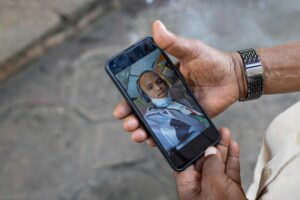Saturday, July 27, 2024
Paris, France
By Laurence COUSTAL
On Monday July 15, Gambian MPs rejected a bill that would have decriminalized female genital mutilation (FGM), a painful and dangerous practice banned in most countries but still performed on more than 230 million girls and women worldwide.
– Cutting or clamping –
These mutilations, carried out for non-medical reasons, essentially involve partial or total removal of the clitoris, excision (total or partial removal of the clitoris and labia minora) or infibulation (narrowing of the vaginal orifice by removal and approximation of the external or internal labia), with or without excision of the clitoris), the most extreme form in which only a tiny orifice is left, to enable girls to urinate and later menstruate.
The type of mutilation varies from country to country: in Sudan, 71% of victims aged between 10 and 19 have undergone infibulation. In Yemen, 90% were excised, and in Djibouti 90% had their clitoris partially or completely removed.
– Demographic progression and growth –
The number of women and girls living with female genital mutilation now exceeds 230 million. That’s 15% more than in 2016 (30 million additional victims), announced Unicef in a report published in March, estimating that this rise was largely linked to population growth in countries where these mutilations are practiced.
“But before the global COVID pandemic, the figures were rather encouraging, with a significant drop”, says Isabelle Gillette-Faye, President of the Fédération nationale du Groupe pour l’abolition des mutilations sexuelles (GAMS). Although FGM has existed since six centuries BC, the results obtained in the space of thirty years are nevertheless “very encouraging”, she adds.
– Manifestation of patriarchy” –
FGM “is considered internationally to be a violation of the human rights of women and girls, including their rights to health, safety and physical integrity, as well as their right to life when these practices have lethal consequences”, says the UN.
“This is one of the most vicious manifestations of the patriarchy that reigns in our world,” insisted its Secretary-General Antonio Guterres in 2023.
Painful and sometimes fatal (although the number of deaths involved cannot be estimated), they can leave permanent psychological and physical scars, such as fertility problems, childbirth complications, stillborn babies, pain during menstruation, urination and sexual relations.
– 99% of women in Somalia –
Africa is the continent most affected, with over 144 million women and girls mutilated, mainly in a series of countries forming a band from the Horn of Africa to the Atlantic coast, including Somalia (99% of women aged between 15 and 49), Guinea (95%) and Djibouti (90%). But also Egypt (87%).
Asia (Indonesia and the Maldives) has 80 million victims, and the Middle East (Yemen and Iraq) six million, according to Unicef.
Some countries have seen a significant drop, such as Burkina Faso, where the percentage of 15-19 year-old girls mutilated has fallen in 30 years from 83% to 32%, the Maldives (from 38% to 1%), Liberia (from 54% to 20%) and Sierra Leone (from 95% to 61%).
“At global level, for those countries where we have quantitative data, it is clear that the generation of girls is less exposed to female genital mutilation than their mothers”, says Isabelle Gillette-Faye.
– Long-term work –
According to Unicef, progress is being made too slowly to compensate for population growth in the regions where the practice is most widespread. Progress would have to be 27 times faster to eradicate this practice by 2030, as targeted by the UN’s Sustainable Development Goals.
Legislation is necessary, but not sufficient: “FGM, for example, is widely practiced in Guinea, where prevalence is 95% despite the fact that the law prohibits it. And in Gambia, prevalence is 73%”, explains Isabelle Gillette-Faye. In this Muslim-majority West African country, MP Almameh Gibba, an advocate of lifting the ban on FGM, had argued that it was a matter of “the right of citizens to practice their culture and religion”.
“Faced with social norms, it’s a long-term task”, explains Ms. Gillet-Faye.
But the levers are numerous: information, education, communication, schooling for girls and boys alike… “In all countries without exception, as soon as the level of education reaches the end of primary school, there is a significant drop” in genital mutilation, argues the sociologist.
Humaniterre with AFP





